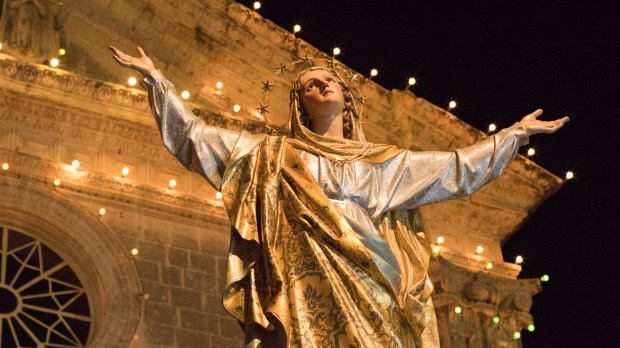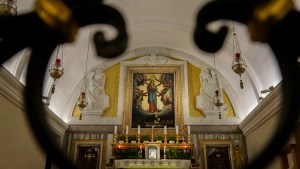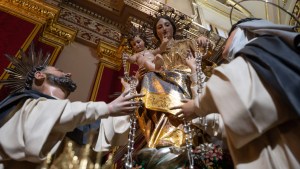The Maltese are well known for their deep Catholic faith and their centuries-old devotion to the Blessed Virgin Mary. The Maltese Christian community is as old as those of Ephesus, Jerusalem, Corinth and Rome, thanks to the Apostle Paul – which explains its 2,000 years of Christian history.
The Blessed Virgin has always had an important place in the Maltese Christian tradition. When the Apostle was shipwrecked on the archipelago’s shores, he was accompanied by Luke – the most Marian of all Evangelists. Luke is also the author of the Acts of the Apostles, and the fact that he uses the first person plural “we” when recounting the shipwreck in Acts 28 further proves that the first Mariologist was with Paul (“When we were safely ashore,” Luke writes, “we found that the island was called Malta.”) Therefore, it is likely that Luke spoke to the Maltese about the Mother of the Savior – and that they warmly received his words.
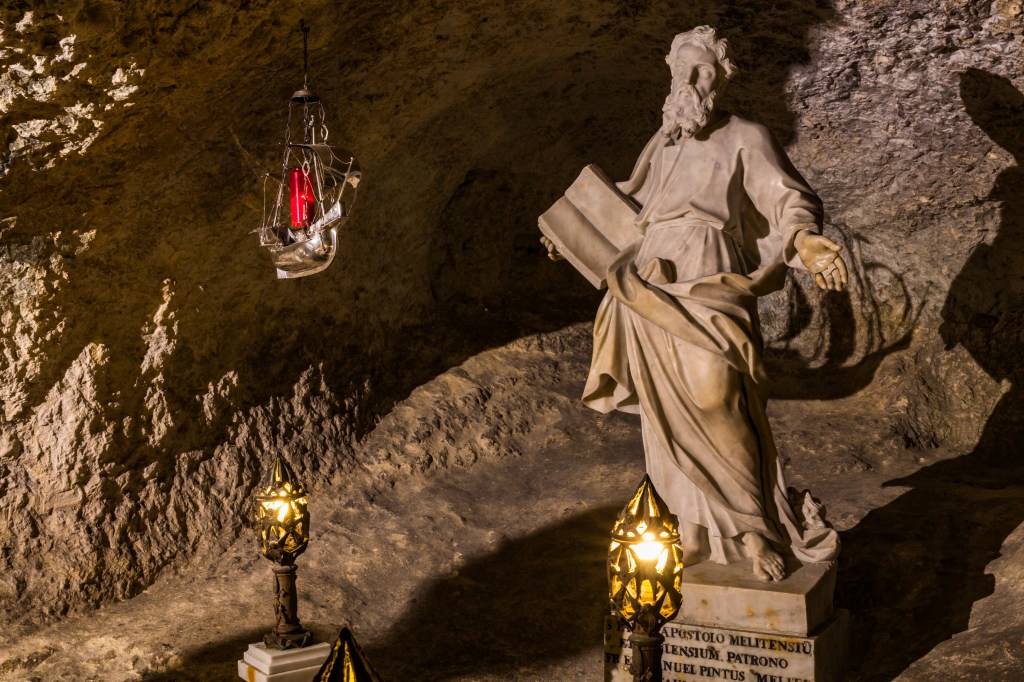
Various historical artifacts and oral traditions from the time of the Apostle’s shipwreck indicate that the natives who accepted the Good News and were baptized in Christ were devotees of the Blessed Virgin. Thus, Malta can be considered one of the earliest Marian shrines.
Soaking up the local devotion
The Marian devotion in which the local children are imbued from their earliest years is witnessed by the hundreds of churches and chapels dedicated to the Blessed Virgin: more than 200 out of a total of 359 churches in just 316 square kilometers. Many of these churches serve as Marian sanctuaries, known for granting special and miraculous graces to countless people over the centuries.
Whether due to the historical connection with St. Luke, Byzantine influences, or the enduring devotion of the Maltese people, Malta stands as a testament to a rich and enduring Marian tradition.
This will be encapsulated in the Melita Mariana Itinerary, a collaborative project between XirCammini and the Malta Tourism Authority, which will develop this Marian devotion, fused in the fiber of the Archipelago, into a 5-day, 100+km pilgrimage encompassing ancient and recent Marian devotions across Malta and Gozo.
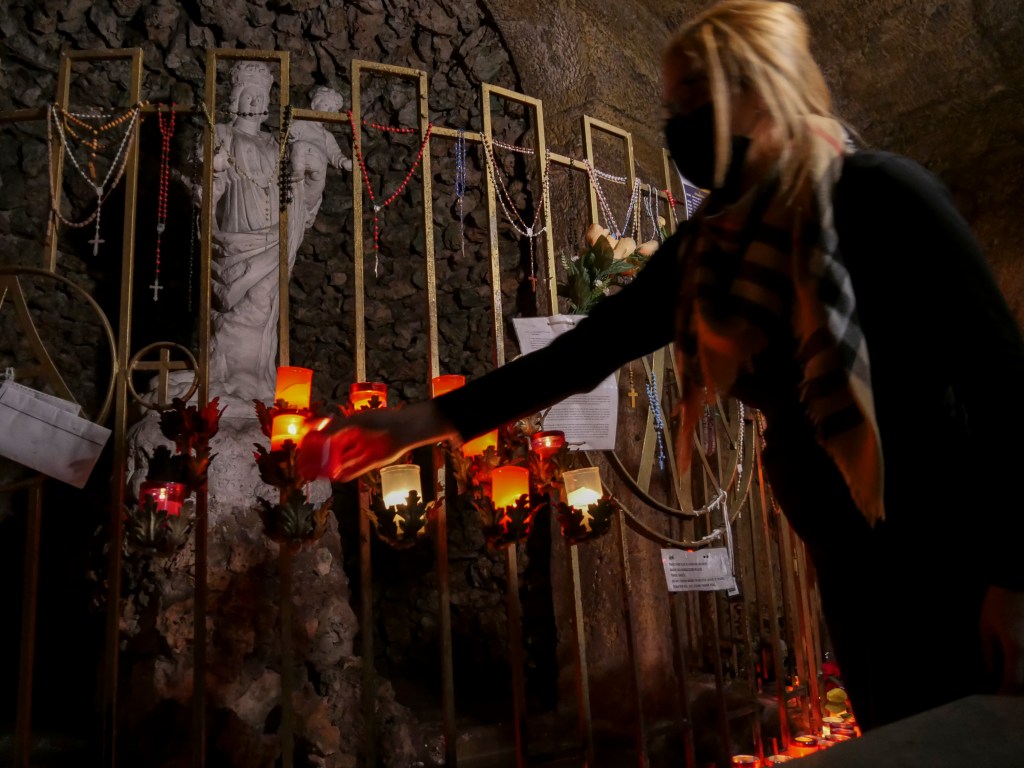
A small chapel dedicated to Our Lady of the Snows (Madonna tas-Silġ), built on a hill overlooking the Byzantine port of Marsaxlokk, is evidence that Malta was a center of Marian devotion. For centuries, seafarers who used this port left burnt offerings to various goddesses associated with sea travel, from the Phoenician Astarte to the Carthaginian Melqart to the Roman Juno. Here we do well to remember the Church’s policy, after the Emperor Constantine declared Christianity to be the religion of the Empire, of converting pagan temples into churches dedicated to Christ and his saints. Temples dedicated to goddesses were then consecrated to the Blessed Virgin.
On the Tas-Silġ hill there was a Neolithic pagan temple dedicated to the goddess of fertility (3000 BC). The Phoenician seafarers built a temple in honor of Astarte, queen of the stars and thus of sea travel (c. 700 BC). Around 300 BC, the Romans turned the Punic temple into a shrine to their goddess Juno, queen of the sky.
Orthodox influence
Now, it is a historical fact, proven by irrefutable documentary and architectural evidence, that a special and intense devotion to the Blessed Virgin was one of the main characteristics of the Christian Orthodox Church and society. Orthodox Byzantines took with them the cult of Mary, which entered the souls of the Maltese and has never left them since.
Between the 4th and 5th centuries the Orthodox Byzantines built a basilica on the site of Tas-Silġ. It is very difficult not to conclude that it was dedicated to the Blessed Virgin Mary. In fact, the period in which it was built, the 5th century, coincides with the Council of Ephesus, the third Ecumenical Council in 431, in which the title of Theotokos was proclaimed for the Mother of Christ.
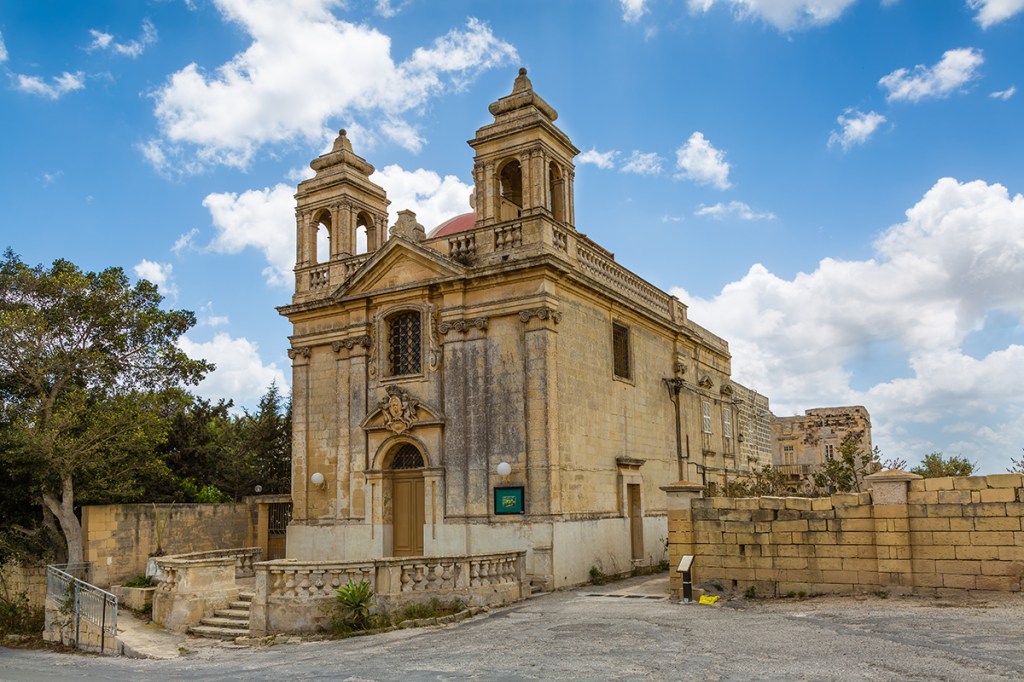
The history of the Gozo Cathedral, dedicated to the Assumption of the Blessed Virgin Mary, the title by which Mary is the patron saint of the Maltese Islands, is further evidence of the millennia-old devotion to Mary in the islands. In fact, the archipelago is dotted with parishes, churches and chapels dedicated to the Assumption – Gozo Cathedral being the highest ranking church in the archipelago with this title.
There are a number of documented sources indicating that the first church on the site predates the Cathedral by centuries. It may have been dedicated to the Dormition of the Blessed Virgin Mary, from which the name Assumption was derived.
Conception, Dormition, Assumption
In both Eastern and Western Christianity, one of the oldest (if not the oldest) Marian devotions is that of the Dormition of the Blessed Virgin as a prerequisite for her imminent glorification – her Assumption into heaven. The devotional life of the Maltese Islands has always given special importance to the Assumption. In the archipelago, she is known as Santa Marija Assunta (or simply Santa Marija). Indeed, Santa Marija has always been the most popular feast and the source of widespread devotion. However, its early origins are difficult to trace. It would not be surprising if the early Christians of Gozo dedicated the Temple of Juno to the Dormition.
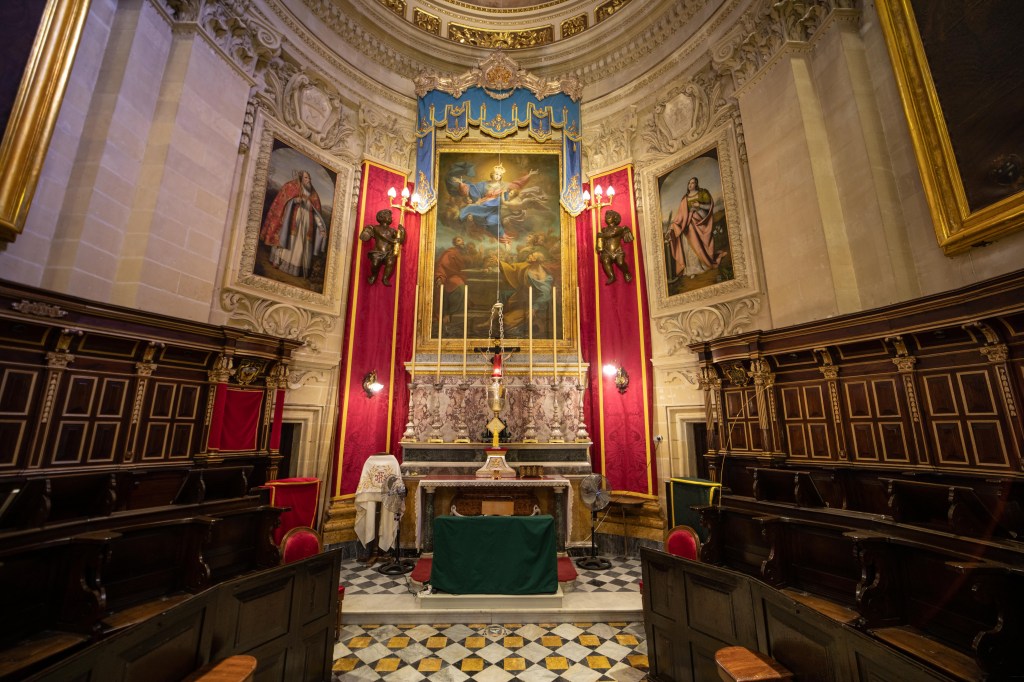
There are numerous forms of Marian devotion (veneration of a particular Marian title) that are widespread and retain importance in our national Christian traditions (churches, chapels, altars, paintings, images, sanctuaries and feasts).
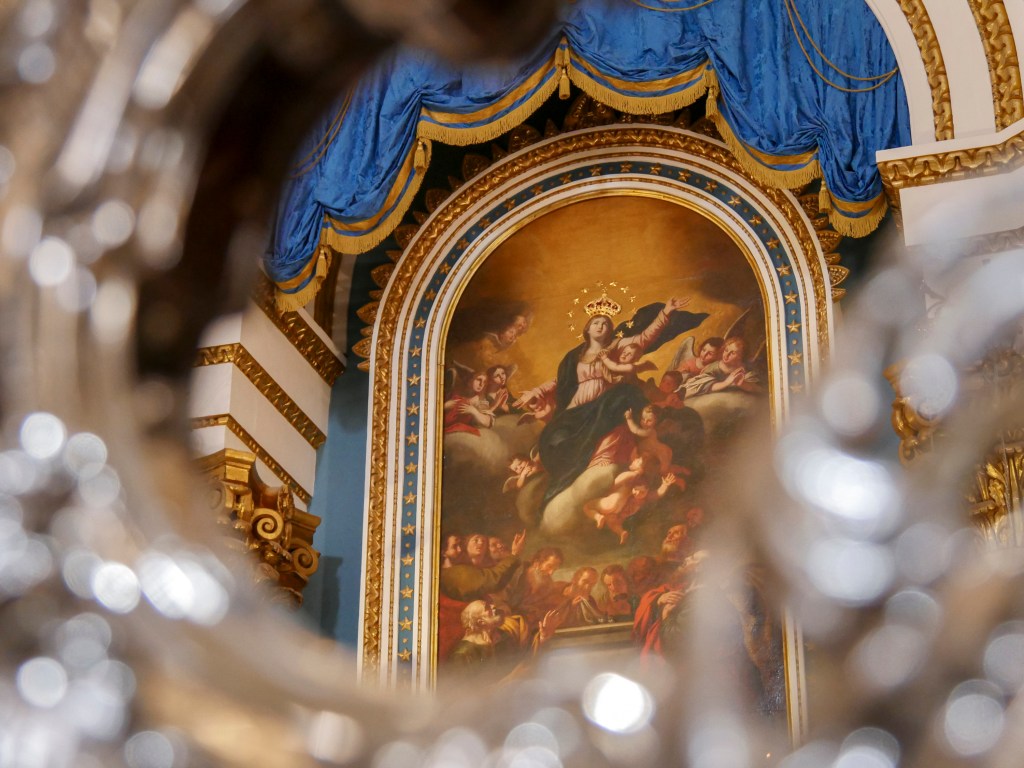
Our Lady of Ta’Pinu
The beginnings of the devotion to the Virgin of Ta’ Pinu are so ancient that they have been lost in time. Documented records show that the church was rebuilt, which means that the chapel was there long before 1545. In 1575 the Apostolic Visitor Pietro Duzina, delegated by Pope Gregory XIII, found it in a very bad condition and ordered its demolition. When the demolition began, a workman broke his arm with the first blow, which was taken as an omen that the chapel would be preserved for future generations. It was the only chapel on the island to survive Duzina’s decree. Eventually, through the apparitions of Our Lady in 1883, the humble, unknown chapel in the countryside became a revered Marian shrine visited by throngs of Gozitans, Maltese, and people from across the sea! Indeed, a few years later it was decided to build a worthy sanctuary in honor of the Mother of God to accommodate the huge crowds. The neo-Romanesque church was built in front of the old chapel, which remains intact behind the altar and still houses the miraculous painting of the Assumption.
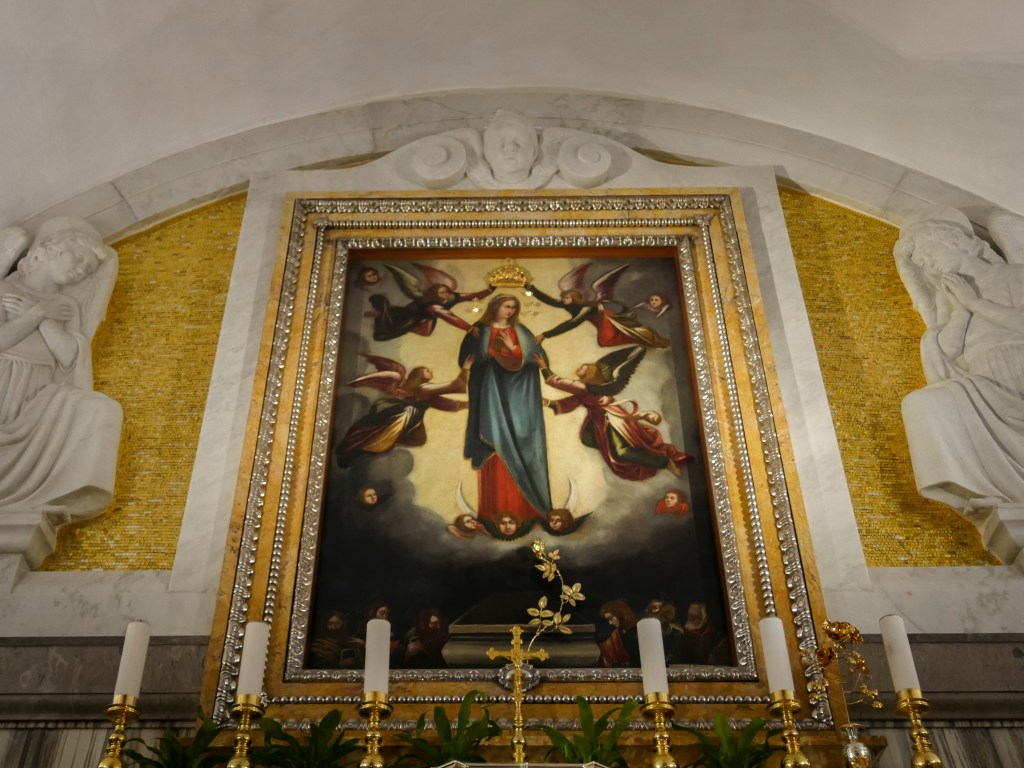
The Marian Shrine of Ta’ Pinu is also known as “The Church of Miracles.” Many people visit the shrine and pray for the intercession of the Blessed Virgin Mary, and many return to testify that their prayers have been answered. In fact, votive offerings (ex-voto) literally cover the walls of two rooms on either side of the altar at Ta’ Pinu. They relate to cancers healed, babies born after years of infertility, terrible accidents resulting in complete healings, and many, many more amazing events and graces.

“Għall-Erwieħ”: for the suffering souls
The Catholic Church has three components: the Church Triumphant, made up of all the saints in heaven; the Church Militant, made up of all the baptized on earth; and the Church Suffering, made up of all the holy souls in purgatory. Unfortunately, the latter usually receives the least attention.
But it’s a different story when it comes to our Heavenly Mother. The Blessed Virgin Mary revealed to St. Bridget of Sweden (c. 1303-July 23, 1373): “I am the Mother of all the souls in Purgatory, and I am the Mother of Mercy to these My children who are most in need of My help, for in their agony they cannot help themselves.”
One only has to visit Malta and Gozo and observe, with a keen eye, the hundreds of street and rural niches, church paintings, ex votos, tomb inscriptions, plaques and monuments to conclude that, in the Maltese religious tradition, the souls in purgatory were, and still are, waiting in the hearts of the living for the moment when they will finally get to Heaven. Centuries of this deep Marian devotion have become bone of the bone and flesh of the flesh of the Maltese Catholic faith. It is therefore natural, even instinctive, for the Maltese to trust their Heavenly Mother to take special care and interest in their dead loved ones, to “commute” the long years of purification in purgatory of their loved ones, and to grant them early pardon for their sins.
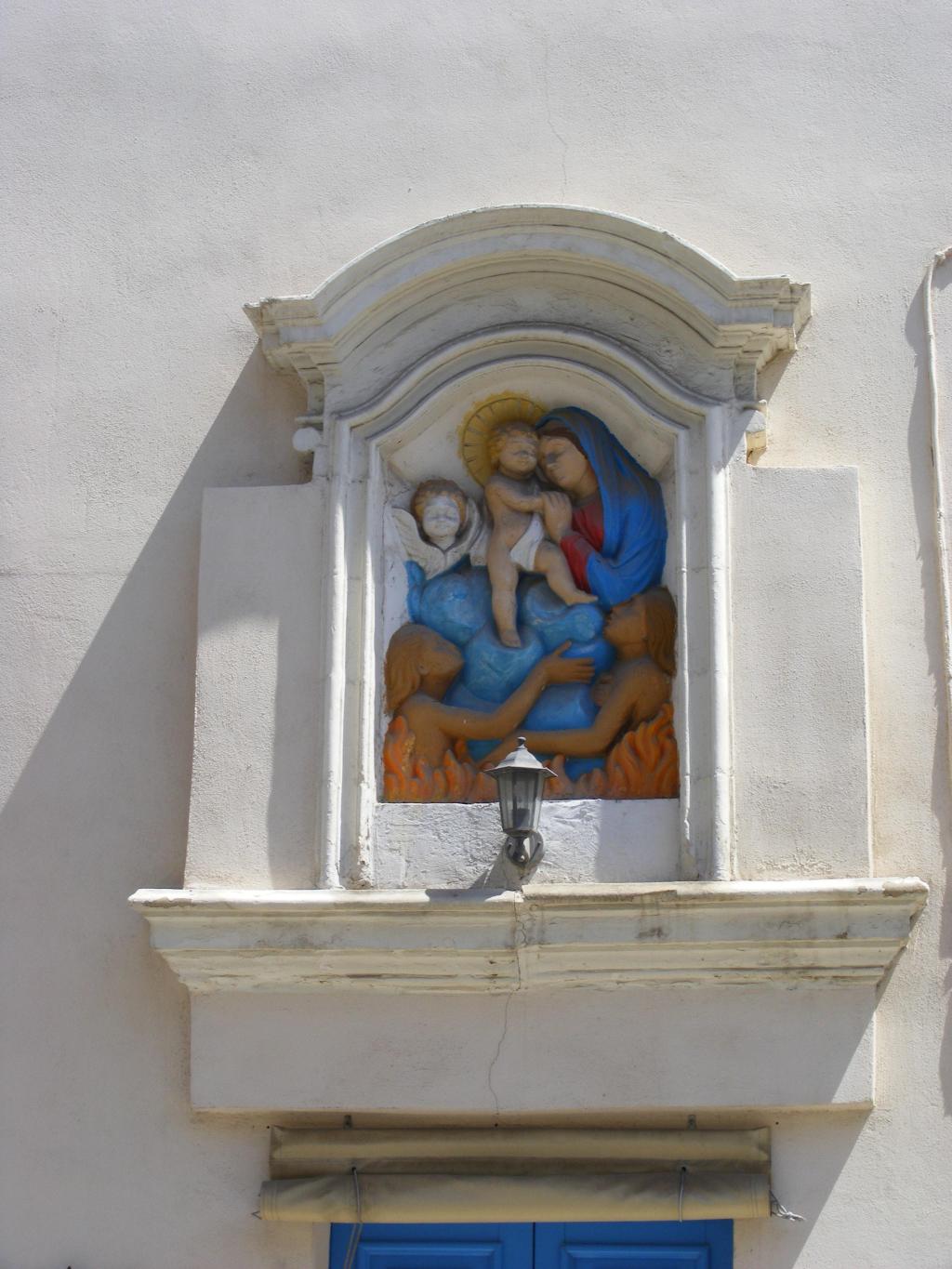
One will do well to note here the special devotion reflected in the many parishes run by the Carmelites and in many convents. This fact is associated with Our Lady of Mount Carmel, who is represented in many images in her assistance to the souls in purgatory. The same can be said of the Dominican Order, which is identified with the Holy Rosary, a prayer recited daily for the salvation of these suffering souls. The Maltese have such faith and hope in the Blessed Virgin Mary that just as their earthly mothers will give up their lives to save their offspring, so our Heavenly Mother will not leave a stone unturned to help her suffering children who are burning in the flames of Purgatory. The Maltese idiom also shows how deeply rooted this bond with the Holy Souls is in the country’s psyche. The expression “Għall-Erwieħ,” meaning “For the Souls in Purgatory,” is instinctively uttered after a good event –as if there is a deep desire to translate the positive event into an offering for the suffering souls.
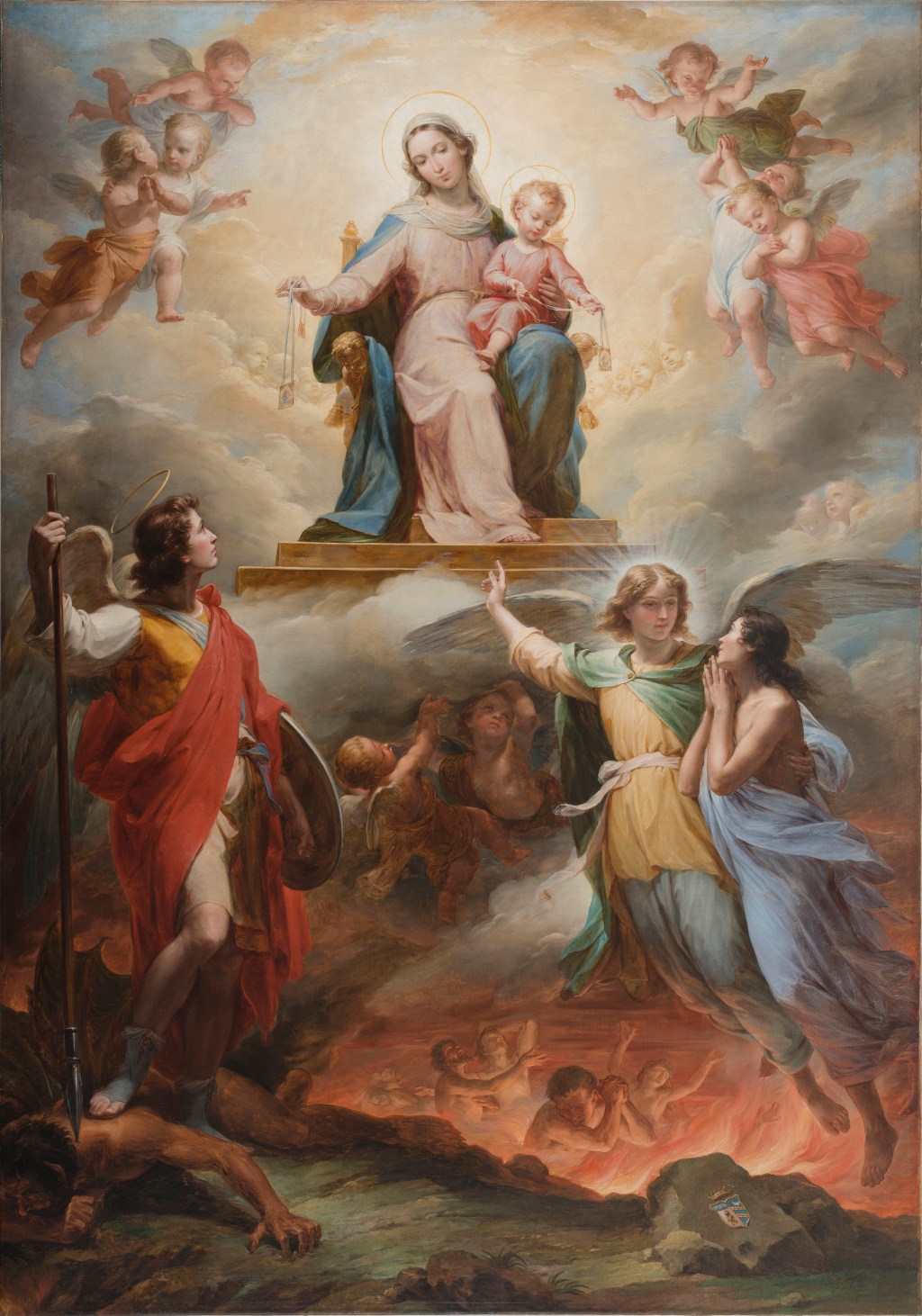
As we can see, Marian devotion in Malta is very old, but it is so fervent that the Maltese are always ready to accept new devotions that develop in other countries. For example, it is one of the curiosities of history that the Church of Our Lady of the Rosary in Marsaxlokk, thanks to an outpouring of grace and providence, was opened and consecrated only one year after the original Church of Our Lady of the Rosary in Pompeii was consecrated, on May 7, 1891. The church of Marsaxlokk was consecrated on September 25, 1892! It became a parish on January 11, 1897, and the first baptism took place on November 22, 1882, when the child was named Rosaria, after Our Lady of the Rosary. On May 8, 2017, Archbishop Charles Jude Scicluna elevated the parish to a Marian Sanctuary.
This content has been brought to you in partnership with the Malta Tourism Authority.
Other references used in this article:
Bonanno A. Malta: Phoenician, Punic, and Roman. Malta’s Living Heritage. Midsea Books, 2005
Bonanno A. and Vella, N.C. Tas-Silġ, Marsaxlokk (Malta): Archaeological Excavations Conducted by the University of Malta (1996-2005). Peeters, 2015
Bezzina J., Marian Devotions in the Islands of St. Paul – The Veneration of Our Lady in Gozo. Historical Society, Malta. 1983
Brincat, J., “Is-Santwarju tal-Kunċizzjoni – Qala – Għawdex” [“The Sanctuary of the Immaculate Conception – Qala – Gozo”], in Kappelli Maltin
[https://www.kappellimaltin.com/Il-Kappelli/Sett03/QLA_Kuncizzjoni/qla_kuncizzjoni.html – in Maltese]
Buttigieg, C., “Tislima lill-Kwadru tal-Immakulata Kuncizzjoni. F’Għeluq l-400 sena tieghu fil-Qala, Għawdwx” [“Greetings to the Painting of the Immaculate Conception. In its 400th year in Qala. Gozo”], in Leħen il-Qala 122 (Milied 2015) 36-37
Bezzina J., “Marian Devotions in the Islands of St. Paul – The Veneration of Our Lady in Gozo”
Fiorini S. A Reconstruction of the Greek and Latin Inscriptions in the Church of St. Helen, Bormla. Melita Historica. Special Edition, 2020
Muscat G. Zvilipp Tal-Qima Lejn Marija Vergni Immakulata F’Bormla (Development of the Devotion to the Immaculate Virgin Mary in Bormla). Malta. 1949
Vella J. The Rock-cut Church of Bormla: Origins and Developments. Journal of Maltese History, volume 5 number 1, 2016
‘Ta’ Pinu Shrine. The Pilgrims’ Haven’, Bishop Nicholas J. Cauchi (2nd revised edition, 2008)
DeBrincat, Christopher (July 2012). “History of Ta Pinu in Gozo – Malta”. Archived from the original on 11 November 2013. Retrieved 3 September 2015.
Abela J. Marsaxlokk a hundred Years Ago. On the Occasion of the Erection of Marsaxlokk as an Independent Parish, 1897. Kumitat Festi Centinarji Marsaxlokk. Malta 1997
Grech J. Ghaliex ghazlu lill-Madonna ta’ Pompeij (The reason they chose Our Lady of Pompeii). Mitt Sena Parocca – Festa Madonna ta’ Pompej. August 1997 [from University of Malta website]
